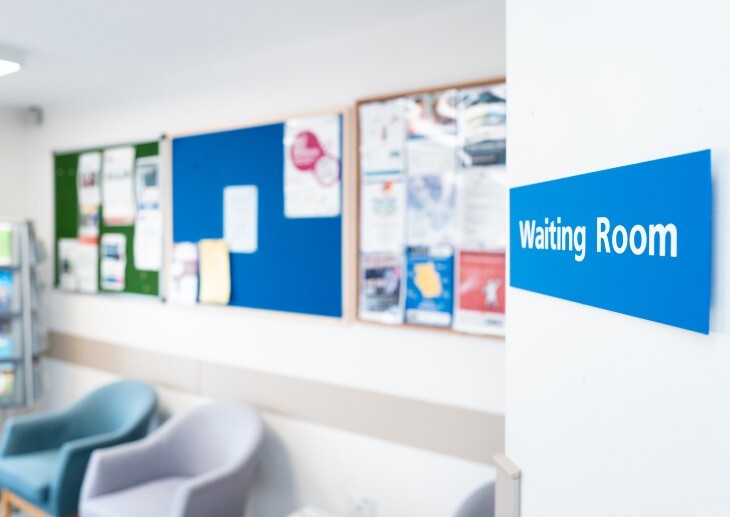No clinical area in the Quality and Outcomes Framework (QOF) has changed quite so much over the years as mental health. Originally, it required explicit patient consent to go on to the register for severe mental health problems. There was much debate at the time about what exactly counted as a severe mental health disorder with quite wide variations between practices. Fortunately, this requirement was removed a couple of years later.
No clinical area in the Quality and Outcomes Framework (QOF) has changed quite so much over the years as mental health. Originally, it required explicit patient consent to go on to the register for severe mental health problems. There was much debate at the time about what exactly counted as a severe mental health disorder with quite wide variations between practices. Fortunately, this requirement was removed a couple of years later.
The explicit register was replaced with a list of patients who had a diagnosis of bipolar or psychotic disorders at any point in their lives. This was a lot clearer about who should have been on the register. However, there was no way for a patient to come off the register again once the diagnosis had been made. Even a single, isolated, psychotic episode 20 or 30 years ago meant that the patient was on for life. In these cases care plans and annual reviews were not appropriate and an annual exception code was required.
This year, there is a solution to that as well. It is now possible to code patients as being in remission from mental health problems. These patients will remain on the register but there is no need for a care plan or the various examinations and investigations. To be classified as 'in remission' patients must have had no antipsychotic medication, inpatient or specialist community treatment for five years. There is no single general code for this; instead there are remission codes for individual diagnoses. Codes stating 'resolved' are not permitted – patients can only be 'in remission'.
This is an opportunity for efficient practices to boost the size of the mental health register without incurring obligations. Effective notes summarisation may reveal old psychotic episodes, which could now be regarded as being in remission. Adding these patients to the register will increase prevalence payments that are worth more than £100 per patient.
If there is a recurrence, or further mental health problems, then the indicators will become active again. In this case the usual three-month grace period, where indicators are automatically accepted following a new diagnosis, does not apply.
Almost all of the achievement indicators have changed this year but the two indicators that apply solely to patients who are taking lithium therapy for bipolar disorder remain. This is defined as having a prescription issue for lithium in the last six months of the QOF year.
There is one point for measuring thyroid stimulating hormone (TSH) between July and the end of March. Two points are available for measured lithium levels in the therapeutic range between December and March. These timings are meant to reflect the National Institute for Health and Clinical Excellence (NICE) guidance that lithium levels should be measured quarterly, although only the last measurement of the year is actually counted. It would be sensible to arrange for all patients taking lithium to be tested in December. There is then time for any patients whose level is out of the therapeutic range to have their dose adjusted and levels rechecked before the QOF deadline at the end of March.
In some cases the patients may have stopped lithium before the end of the QOF year and should be exception reported. There is no specific lithium exception code. It is, of course, vital that every practice has at least one patient taking lithium therapy – defined as a prescription in the last six months of the QOF year – to be eligible for these three points.
The remainder of the indicators apply to all patients on the register, except those coded as being in remission. There is no requirement this year to follow up patients who do not attend appointments, although this would remain good practice if there are concerns.
All patients require an annual care plan produced by face-to-face contact in primary care. This should include warning signs of relapse and details of the other sources of support.
The annual review has been transformed into a series of physical measurements and figures that have to be collected. All patients on the register require a record of the amount of alcohol that they consume. The list of acceptable codes is a little eccentric. Probably the safest way to record this is with the 136 'alcohol consumption' code and a numerical figure.
The physical examination requires body mass index (BMI) and blood pressure to be recorded. There is an exception code available if patients refuse to have their blood pressure measured, but exception reporting specifically from BMI measurement is not possible. Both of these must be done within 15 months of the end of March so records in January, February or March would count for two QOF years.
Annual blood tests are required for glucose and lipid levels in patients who are 40 years old or more at the end of the QOF year. The lipid test must be a total cholesterol (TC):high-density lipoprotein (HDL) ratio. Version 19 of the business rules specified the inverse (ie, HDL:TC ratio) but this is an acknowledged error and should be corrected.
The glucose measurement is not required if the patient already had a diagnosis of diabetes before the start of the QOF year. Both cholesterol and glucose tests can be either fasting or random. There are no specific exception codes for these blood tests. The final indicator requires cervical screening of women on the mental health register. The eligibility is the same as for the current national programmes and looks for smears or exclusions in the previous five years. The age range varies between Wales, England and Scotland in line with their national programmes.
While there is certainly more to do and record in the area of mental health this year there is also a small rise in the total points available. Patients on the mental health register can be less likely to attend reviews and so an effective recall system is vital to ensure that all of the targets are met.
The standards are high with a top threshold of 90% for the clinic measurements and 80% for blood tests and smears.
Many of the indicators are for subgroups of the register. Small practices will need to be observant and ensure that they have at least one patient in each of these subgroups or the points will be forfeited.
The mental health area continues to be one of the most lucrative clinical areas of the QOF and most of the points should be achievable for all practices with planning and efficient organisation.





